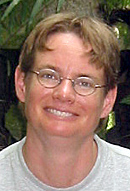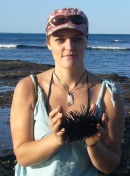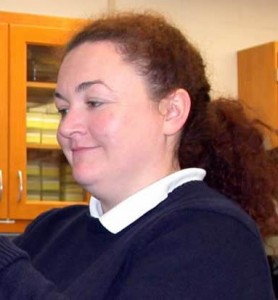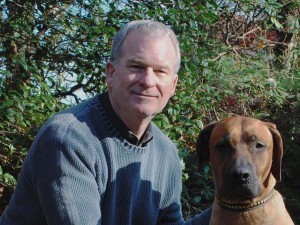 Bassem Allam Marine Invertebrate Pathology and Immunology
Bassem Allam Marine Invertebrate Pathology and Immunology
Allam’s group uses a wide range of high throughput sequencing methods (transcriptomics, genotyping-by-sequencing, metagenomics) to investigate host-pathogen interactions in marine invertebrates. Examples include understanding genetic diversity and virulence mechanisms in pathogens, and biological bases of resistance in animal hosts (comparative immunity, genetic diversity).
 Jackie Collier Microbial ecology
Jackie Collier Microbial ecology
 Nolwenn Dheilly Evolution of Host-Parasite interactions
Nolwenn Dheilly Evolution of Host-Parasite interactions
Our research integrates the disciplines of immunology, parasitology, ecology, evolution and genetics to study the underlying principles of host-parasite co-evolution. In particular, it uses a combination of functional genomics approaches in laboratory experiments and field studies to understand the role of microbes interactions with the host immune system and with parasites in health and diseases.
 Christopher Gobler Coastal Ecosystem Ecology
Christopher Gobler Coastal Ecosystem Ecology
My lab uses next generation sequencing of transcriptomes and genomes in laboratory experiments and aquatic ecosystems to understand how environmental conditions influence the growth and survival of aquatic algae and animals.
 Anne McElRoy Aquatic Toxicology
Anne McElRoy Aquatic Toxicology
 Emmanuelle Pales Espinosa Shellfish physiology
Emmanuelle Pales Espinosa Shellfish physiology
Emmanuelle is a research scientist and adjunct assistant professor at the Marine Animal Disease Laboratory. She uses high throughput transcriptomics tools to answer basic questions pertaining to the physiology and the mechanisms of food choice (capture and sorting) in suspension-feeding bivalves.
 Gordon Taylor Microbial Oceanography
Gordon Taylor Microbial Oceanography
Our lab combines traditional microbial ecological and geochemical measurements with modern molecular techniques, such as SSU rRNA libraries, terminal restriction fragment length polymorphism (T-RFLP), fluorescent in situ hybridization (FISH), stable isotope probing (SIP), and quantitative PCR of functional genes and gene expression, to unravel the interplay between microbial population dynamics, chemical gradients, and elemental cycling. Our primary field study site is the stratified oxygen-depleted waters of the Cariaco Basin (Caribbean Sea). My lab has recently been examining how the metagenomes and metatranscriptomes from Bacteria, Archaea and Protists vary with geochemical seascapes of this unique ecosystem with colleagues from Woods Hole Oceanographic Institution. In pursuit of understanding the jobs of specific microbial populations within complex microbial communities across wide-ranging geochemical seascapes, we have recently added single-cell activity measurement capabilities to our repertoire. This is enabled by SoMAS’ NAno-Raman Molecular Imaging Laboratory (NARMIL – https://you.stonybrook.edu/nanoraman/). NARMIL houses a novel, state-of-the-art Renishaw inVia confocal laser Raman microspectrometer coupled to a Bruker Innova Atomic Force Microscope (AFM), which permits 3-D mapping of chemical functionalities, while coincidentally providing fluorescent, bright field and topographic images. These instruments facilitate linking function to phylogeny through the use of genetic probes. These linkages enable more authoritative inferences about the role of specific microorganisms discovered within genomic databases.


